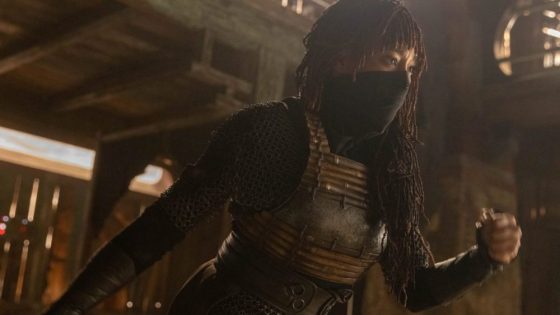Since Disney revived “Star Wars” in 2015 with J.J. Abrams’ “The Force Awakens,” the strongest entries in the franchise have had one trait in common. Rian Johnson’s “The Last Jedi” and Tony Gilroy’s “Andor” both opted to take the franchise in bold new directions, opening up exciting new possibilities for what a “Star Wars” story could be. “The Last Jedi” steered the core narrative away from the Skywalker family, implying that anyone could become a Jedi and, therefore, a hero. “Andor” used familiar settings as the backdrop for an adult political drama about rebellion and imperial administration, rejecting heroes entirely in favor of the individuals who make up mass movements. Fans may not always have seen them as such — “The Last Jedi” faced an infamous fan backlash, while “Andor” Season 1 paled in viewership to the likes of “The Mandalorian” — but these projects offered a lifeline to a saga that’s struggled to find a way forward, especially at the multiplex. Longevity requires vitality, which in turn requires flexibility.
“The Acolyte” is not “Andor” or “The Last Jedi,” nor is it trying to be. (In fact, it’s practically the inverse of Gilroy’s show; where “Andor” eschews the supernatural in favor of foot soldiers, “The Acolyte” goes all-in on the Jedi order and its Force-wielding space wizards.) But the latest “Star Wars” series, created by Leslye Headland of “Bachelorette” and “Russian Doll,” shares with these predecessors a willingness to put its own spin on hallowed lore. In the four episodes — of an eight-episode season — shared with critics in advance, “The Acolyte” combines the classical elements that give “Star Wars” an evergreen appeal with new additions to the canon, a strong core cast and a brisk pace. The show also underscores a lesson “Star Wars” has taught itself in the past, though hasn’t quite taken to heart: you don’t need to recycle elements from the master narrative to make its offshoots compelling. In fact, the opposite approach is often more rewarding.
Set a century before the collapse of the Republic in a kind of prequel to George Lucas’ prequels, “The Acolyte” begins as a mystery. In the cold open, Jedi Master Andara (Carrie-Anne Moss) is confronted by a warrior (Amandla Stenberg) who appears to hold a personal grudge against Andara specifically and the Jedi writ large. Their deadly confrontation then cuts to a ship mechanic, Osha (also Stenberg), an ex-Jedi trainee who left the order six years earlier. Osha doesn’t seem like the type to assault anyone with knives, but the Jedi sent to investigate a suspect matching her description, including her former classmate Yord (Charlie Barnett, in a “Russian Doll” reunion with Headland), have their doubts.
Yet “The Acolyte” is quick to explain the relationship between Stenberg’s two characters, both to the audience and Osha’s investigators. The show, it turns out, has more interesting topics to turn to, like the relationship between Osha and her onetime mentor Sol (“Squid Game” star Lee Jung-jae). Along with Andara, Sol was once stationed on Osha’s home planet, where a fire took the lives of her entire family — including, or so she thought, her twin sister, Mae. A then eight-year-old Osha went to Coruscant with Sol, who retains a guilt-inflected soft spot for his erstwhile student, while Mae trained with an anonymous master. No one says the words “dark side” or “Sith,” but the red lightsaber speaks for itself.
There are obvious echoes of Luke and Leia in the story of twins separated as young children, and Darth Vader in a villain who wears a mask and speaks with a distorted voice. But later episodes contain revelations that subvert, and even threaten to upend, our notions of the Jedi and binary conception of the Force.
The Jedi’s fallibility has long been one of the most interesting, and underexplored, “Star Wars” themes. In their pursuit of a chosen one, the warrior monks inadvertently planted the seeds of their own destruction; Luke Skywalker grew so disillusioned with his life’s work that he vowed the order would die with him. “Star Wars” has always, on some level, been a Greek tragedy disguised as a children’s blockbuster. But while a slew of spinoffs can dilute a brand’s cachet, as they have for corporate sibling Marvel, they can also allow for a narrow focus. When not forced to share (literal) space with armies and outlaws, the Jedi have never been as centered, nor as scrutinized, as they are in “The Acolyte.”
Lee’s Sol emerges as the empathetic face of this ambivalence. Viewers familiar with the actor’s work in South Korea won’t be surprised to see him as an action hero with a heart, but to Americans who know him solely from the Netflix sensation, the role is a show of range on one of the biggest stages in English-language media. Stenberg, of course, gets to embrace her dual role, developing Mae and Osha’s physicalities as well as their differing points of view on the Jedi. (Though it says something that even defender Osha chose not to join their ranks because she couldn’t let go of emotion in her unprocessed grief.) Manny Jacinto plays Mae’s accomplice, a performance that recalls his bumbling, goofy “The Good Place” character with more sinister undertones, and Dafne Keen of “His Dark Materials” conveys her sharply inquisitive young Padawan from under a mountain of makeup and CGI. Together, the ensemble riffs on established “Star Wars” types while making marks of their own.
“The Acolyte” is propelled by plentiful action, much of it hand-to-hand combat heavily inflected with martial arts. (When Moss elegantly bounds up a railing in the opening scene, presumably assisted by wires, you could easily be watching a wuxia film.) But the action itself is rooted in conflict with stakes both large and small for characters we quickly come to care about. Whether Osha and Mae can come to some form of understanding is tied up in existential questions about whether the Jedi can be trusted, or trust themselves, as arbiters of justice. In giving itself permission to poke at “Star Wars” mythology, “The Acolyte” cultivates the same sense of curiosity it exhibits about its own universe. Too often, franchise series feel like a perfunctory exercise in expansion. When my screeners for “The Acolyte” ran out, I wanted to learn what happened next, even if we already know where the Republic is heading.
The first two episodes of “The Acolyte” will launch on Disney+ on June 4 at 6 p.m. PT, with remaining episodes streaming weekly on Tuesdays.
Source Agencies


